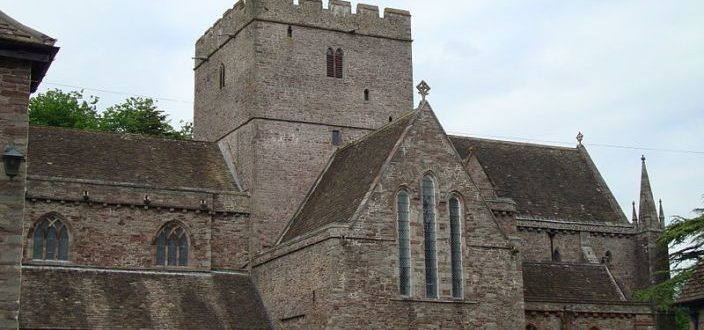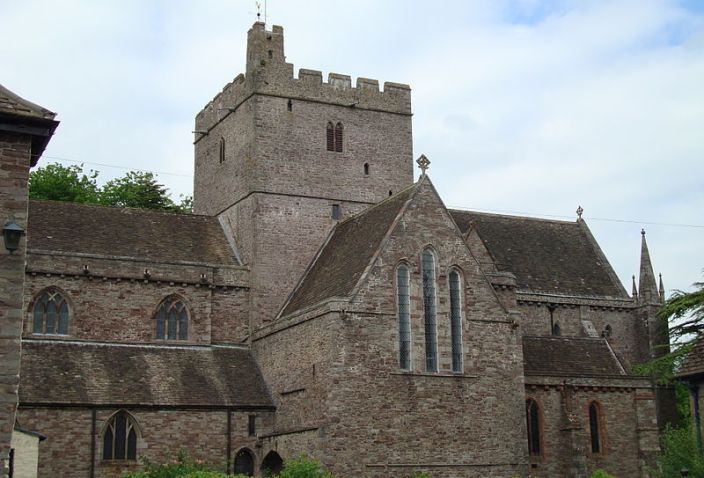Brecon, Powys
By Agincourt 600 Wales
Henry V’s forces at the Battle of Agincourt included 500 Welsh archers and 23 men-at-arms.
Of that number, 10 men-at-arms, 13 mounted archers and 146 foot archers formed the contingent from the Brecon area. The town’s Agincourt roots are still visible today. In Brecon Cathedral, the stained glass window commemorates Sir Roger Vaughan of Bredwardine, who died fighting at the Battle, along with his father-in-law Dafydd Gam. Dafydd – or Davy – has family links to the Games Monument, a recumbent effigy of a female figure dating from 1555. In the Cathedral’s restored 16th-century Tithe Barn and Heritage Centre you can you can see a list of the names of local archers who fought in the Battle and also the stone used to sharpen their arrows.
Brecon’s military associations don’t end with Agincourt. The South Wales Borderers’ Museum at Brecon Barracks tells the tale of the regiment’s 140 soldiers who faced more than 4,000 Zulu warriors at the famous Battle of Rorke’s Drift in 1879. The town is known for its industrial as well as military history. It’s at one end of the Brecon and Monmouthshire Canal. Once a major trade route for barges carrying coal and limestone, it’s now the placid domain of pleasure craft and longboats, stretching 35 miles to Pontypool and beyond.
This handsome Georgian town, an obvious focal point for the Brecon Beacons National Park, welcomes many visitors throughout the year. For more information on the town, visit www.brecontown.co.uk
Image is of Brecon Cathedral, Powys, taken from Wikipedia and is in the Public Domain, author John Armagh

